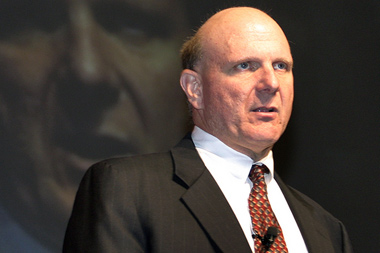Does Steve Ballmer aim to pull Microsoft's strings in wake of departure?

As tech giant’s former CEO finally quits board, his sign-off letter to current boss Satya Nadella reveals strong ambitions to remain involved with the firm's activities
Jermaine Haughton
After 24 years at Microsoft, Steve Ballmer has resigned his seat on the software company’s board to focus mainly on his latest venture: the LA Clippers basketball franchise. While Ballmer paid more than $2 billion to disgraced former owner Donald Sterling to purchase the team, the 58-year-old business veteran has indicated that he will not fully disassociate himself from Microsoft – and plans to hang on to his 4% stake in the $15bn-valued firm.
Indeed, in his resignation letter to current chief executive Satya Nadella – published yesterday on Microsoft’s website – Ballmer gave every indication that he wants to remain tangibly involved as a decision maker, and was keen to point out what he considered to be the firm’s most beneficial direction.
“In the mobile-first, cloud-first world,” he wrote, “software development is a key skill, but success requires moving to monetisation through enterprise subscriptions, hardware gross margins, and advertising revenues. Making that change while also managing the existing software business well requires a boldness and fearlessness that I believe the management team has. Our board must also support and encourage that fearlessness for shareholders to get the best performance from Microsoft. You must drive that.”
Ballmer went on: “I have confidence in our approach of mobile-first, cloud-first, and in our primary innovation emphasis on platforms and productivity and the building of capability in devices and services as core business drivers.”
Then, in an extraordinary aside, he reminded Nadella: “I hold more Microsoft shares than anyone other than index funds, and love the mix of profits, investments and dividends returned in our stock. I expect to continue holding that position for the foreseeable future.” In his sign off, he asserted: “I continue to love discussing the company’s future. Count on me to keep ideas and inputs flowing … I promise to support and encourage boldness by management in my role as a shareholder in any way I can.”
In a comparatively curt reply, Nadella wrote: “Under your leadership, we created an incredible foundation that we continue to build on – and Microsoft will thrive in the mobile-first, cloud-first world.”
Ballmer’s intention to remain linked with the company adds an interesting dynamic – and chimes with similar power struggles of the past. In politics, for example, Margaret Thatcher remained a significant – and destabilising – influence on prime minister John Major’s administration in the early 1990s. The resulting divisions helped to drive the Conservative Party into disarray, paving the way for Labour’s 1997 landslide.
In the football world, meanwhile, tech tycoon Lord Sugar was booed and chanted out of his position as Tottenham Hotspur’s chief executive after failing to meet trophy expectations, hiring unsuccessful managers and snapping up lacklustre players. But the TV star remains a significant shareholder at the North London club – and often uses social media to showcase his feelings about how the team is being managed to almost 3.5 million Twitter followers.
For further details about the succession-planning issues raised in this article, check out the details on CMI’s Checklist book Managing Others.
Image of Steve Ballmer courtesy of imagemaker / Shutterstock

Press & Media Enquiries
For more information or to request interviews, contact CMI's Press Team on 020 7421 2705 or email press.office@managers.org.uk


